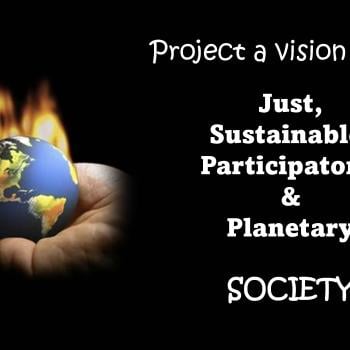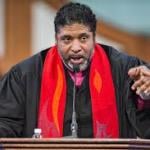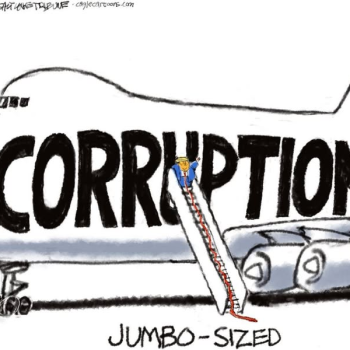Religious Transhumanism? Yes.
Mormon Transhumanism? Yes, indeed!
H+ 5 / 1015
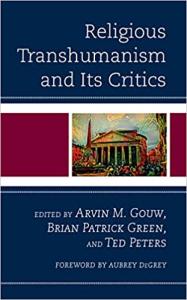 Transformation! That’s the aim of religious transhumanists. It’s also the aim of Mormon Transhumanism.
Transformation! That’s the aim of religious transhumanists. It’s also the aim of Mormon Transhumanism.
John Hick, for whom the one God has many names, points out the decisive role spiritual transformation plays in the world’s religions. Hick explores what he calls the “pluralistic hypothesis,” which holds that “the great world faiths embody different perceptions and conceptions of, and correspondingly different responses to, the Real from within the major variant ways of being human; and that within each of them the transformation of human existence from self-centeredness to Reality-centeredness is taking place.” (John Hick, An Interpretation of Religion, 1989, 240). Transformation includes conformation of the self to THE REAL.
Can the religious transhumanist ask for technological enhancement to help us reach that new relation to reality? Lincoln Cannon, architect of Mormon Transhumanism, would answer affirmatively and enthusiastically.
Religious Transhumanism and Its Critics
It’s imminent! The publication of Religious Transhumanism and Its Critics with Roman and Littlefield/Lexington edited by Arvin Gouw, Brian Patrick Green, and Ted Peters. We’ve been aiming at this Goliath for a half dozen years now. We’ve finally hit the mark.
Here in this Patheos series on public theology, we are constructing a scientifically informed vision of humanity’s future in light of God’s eschatological promises for ultimate transformation and renewal. In H+ 1, we asked whether AI could provide a shortcut to virtue or holiness? In H+ 2, we parsed the transhuman, the posthuman, and the truly human. In H+ 3, we distinguished Radical Life Extension, Cybernetic Immortality, and Resurrection of the Body. In H+ 4 we asked whether an evangelical could be a transhumanist? Micah Redding and the Christian Transhumanist Association answered affirmatively: yes. Here in H+ 5 we extend the discussion by adumbrating various commitments by various adherents to religious transhumanism. Critics too.
Meet Lincoln Cannon
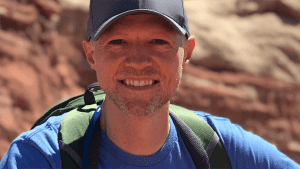 Lincoln Cannon is a technologist, philosopher, and leading advocate of Mormon Transhumanism. Lincoln writes and presents about technological evolution and post-secular religion. He esteems religion as a powerful social technology that, like all technology, presents both risks and opportunities. And he envisions the ethical use of technology empowering humanity to attain unprecedented magnitudes of intelligence, vitality, and compassion. Lincoln is a founder of the Mormon Transhumanist Association and the Christian Transhumanist Association, the world’s largest advocacy networks for ethical use of technology and religion to enhance human abilities. He also formulated the New God Argument, a logical argument for faith in God that is popular among religious Transhumanists. Lincoln is founder and CEO of Thrivous, the human enhancement company. He received an MBA from the Marriott School of Business and a bachelors degree in philosophy from Brigham Young University.
Lincoln Cannon is a technologist, philosopher, and leading advocate of Mormon Transhumanism. Lincoln writes and presents about technological evolution and post-secular religion. He esteems religion as a powerful social technology that, like all technology, presents both risks and opportunities. And he envisions the ethical use of technology empowering humanity to attain unprecedented magnitudes of intelligence, vitality, and compassion. Lincoln is a founder of the Mormon Transhumanist Association and the Christian Transhumanist Association, the world’s largest advocacy networks for ethical use of technology and religion to enhance human abilities. He also formulated the New God Argument, a logical argument for faith in God that is popular among religious Transhumanists. Lincoln is founder and CEO of Thrivous, the human enhancement company. He received an MBA from the Marriott School of Business and a bachelors degree in philosophy from Brigham Young University.Mormon Transhumanism
TP. Lincoln, in your chapter in Religious Transhumanism and Its Critics, you provide a manifesto of sorts for Mormon Transhumanism. You say the following: “Mormon Transhumanism is the idea that humanity should learn how to be compassionate creators.” Are you merely drawing a parallel between secular transhumanism and religious transhumanism? Or, are you asking Mormons to adopt, imbibe, and incorporate transhumanism?
LC. I’m doing some of both and more. There are strong parallels between Transhumanism and some interpretations of traditional religions, particularly Mormonism. My chapter elaborates on some of those parallels. And I do also encourage Mormons to identify as Transhumanists explicitly, in part because it tends to be faith affirming. Hence, Mormon Transhumanism.
However, beyond those two aims, I aim to help people recognize that Mormonism is already implicitly Transhumanist. With its embodied God, physicalist metaphysics, and practical emphasis on works and apotheosis, Mormonism advocates practical human transformation in ways that are, or at least can be, consistent with contemporary science and technological trends. It’s not at all rare for Mormons, when encountering Transhumanism for the first time, to remark that they’ve always kind of looked at human potential that way.
Mormon Theodicy
TP, You write, “Mormonism offers a theodicy that explains evil as an unavoidable risk inherent in any opportunity to create more genuine creators.” Could you describe briefly how Mormon theology at its best handles theodicy? [Mormon Temple, Salt Lake City, by La Rae Roberts]
 According to Joseph Smith, the founding prophet of Mormonism, God “found himself in the midst of spirits and glory, and because he was greater, he saw proper to institute laws whereby the rest could have the privilege of advancing like himself.” In Mormon theology, God doesn’t create the universe ex nihilo. But rather, God organizes the world within a context of matter and laws that are co-eternal with God. That implies a possibility space within which God operates.
According to Joseph Smith, the founding prophet of Mormonism, God “found himself in the midst of spirits and glory, and because he was greater, he saw proper to institute laws whereby the rest could have the privilege of advancing like himself.” In Mormon theology, God doesn’t create the universe ex nihilo. But rather, God organizes the world within a context of matter and laws that are co-eternal with God. That implies a possibility space within which God operates.
The Mormon version of the creation story begins before the creation of Earth, when the Gods and their premortal spirit children counsel together to plan the creation. During this council, Christ champions creation of a world with real opportunity and risk, where its inhabitants will experience suffering but with the possibility of becoming like God. In contrast, Satan champions creation of a world without risk of suffering, but also without the potential to become like God. God chooses the first, and war ensues that continues to this day.
The Book of Mormon observes, when commenting on the creation story, that conceptual coherence requires “opposition in all things.” A world without the false, evil, or ugly cannot have the true, good, or beautiful. A world without such conceptual opposition would have “neither sense nor insensibility.” So, in addition to whatever might be the physical possibility constraints on creation, there are also logical possibility constraints.
Thus, in accordance with Mormon theology, evil is real and even terribly so. But it’s also a necessary risk in any world that would give its inhabitants the opportunity to experience good. And the experience of good, particularly the experience of doing that which is good, is essential to cultivating divine attributes. As Paul states in the New Testament, we may be joint heirs with Christ in the glory of God, “if so be that we suffer with him.”
Mormon Eschatology and the Singularity
TP. I’m fascinated by your treatment of eschatology. Could you draw out the implications of transhumanism for eschatology?
LC. Transhumanists, and particularly Singularitarians, engage in eschatology that functions analogously to that of Christian eschatology. Some Singularitarians take an apocalyptic view, fearing the risks associated with an imminent development of superintelligence. Some take a messianic view, trusting that superintelligence can solve for us our most pressing problems. And some take a millenarian view, hoping that the world made possible by superintelligence will be one beyond present notions of enmity, poverty, and death.
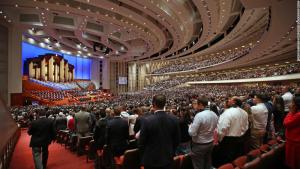
Traditional theology may help in development of a formal science of superintelligence in ways analogous to those that astrology and alchemy helped in development of astronomy and chemistry. And conversely, theologians should recognize as allies those secular persons who are engaged in developing a formal science of superintelligence. The alternatives are myopic or superstitious.
TP. Any final words?
LC. Thanks for inviting me to contribute my chapter and share some thoughts on religious transhumanism. I hope people will enjoy and otherwise benefit from knowing more about Mormon Transhumanism. It illustrates not merely the compatibility of Transhumanism with traditional religion, but even more so their complementarity.
There’s a great deal of sociocultural power in religion. And there’s much epistemic and practical power in science and technology. In combination, more than anything else I’ve ever been able to imagine, they can and, I trust, surely will serve as a foundation for a much better and more beautiful world. Religious persons, rather than fearing this possibility and its opportunities, should recognize in it the grace of God and a duty to make ethical use of all the means that grace affords us.
Conclusion
Is technology a means of grace?
I am not a disciple of John Hick. Yet, I applaud his observation that spiritual transformation seeks to conform the soul to THE REAL. What is the real? Is it the kind of life we now live? Is it the life of Adam and Eve, hopelessly stuck in disobedience combined with self-justification to cover up the disobedience? Is it the life that ends in death?
The New Testament promises a transformation into the image of God (imago Dei). That divine image has been defined by the resurrected Jesus Christ on Easter Sunday. The Easter Christ is THE REAL. That is the reality that beckons us forward. That is God’s call to become transformed into true humanity.
Can technological progress grease the wheels that roll us toward God’s eschatological future? Religious transhumanists such as Lincoln Cannon answer in the affirmative. Even though like Lincoln Cannon I applaud every technological leap forward, I fear that each technological advance is ambiguous. On the one hand, technology can be a life-giving blessing. On the other hand, technology can be a death-dealing curse. Technology cannot on its own deliver us from ambiguity. Only divine grace can do that.
▓
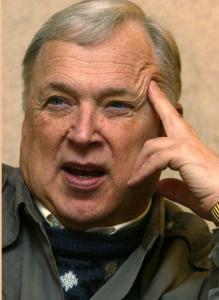 Ted Peters directs traffic at the intersection of science, religion, and ethics. Peters is an emeritus professor at the Graduate Theological Union, where he co-edits the journal, Theology and Science, on behalf of the Center for Theology and the Natural Sciences, in Berkeley, California, USA. He authored Playing God? Genetic Determinism and Human Freedom? (Routledge, 2nd ed., 2002) as well as Science, Theology, and Ethics (Ashgate 2003). He is editor of AI and IA: Utopia or Extinction? (ATF 2019). Along with Arvin Gouw and Brian Patrick Green, he co-edited the new book, Religious Transhumanism and Its Critics hot off the press (Roman and Littlefield/Lexington, 2022). Soon he will publish The Voice of Christian Public Theology (ATF 2022). See his website: TedsTimelyTake.com.
Ted Peters directs traffic at the intersection of science, religion, and ethics. Peters is an emeritus professor at the Graduate Theological Union, where he co-edits the journal, Theology and Science, on behalf of the Center for Theology and the Natural Sciences, in Berkeley, California, USA. He authored Playing God? Genetic Determinism and Human Freedom? (Routledge, 2nd ed., 2002) as well as Science, Theology, and Ethics (Ashgate 2003). He is editor of AI and IA: Utopia or Extinction? (ATF 2019). Along with Arvin Gouw and Brian Patrick Green, he co-edited the new book, Religious Transhumanism and Its Critics hot off the press (Roman and Littlefield/Lexington, 2022). Soon he will publish The Voice of Christian Public Theology (ATF 2022). See his website: TedsTimelyTake.com.
▓






